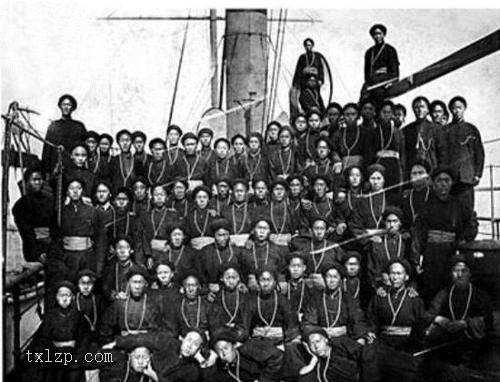Period:Tang dynasty Production date:728 (Date recorded for the death of general Liu Tingxun.)
Materials:earthenware
Technique:glazed
Subjects:horse/ass
Dimensions:Height: 85 centimetres
Description:
Lead-glazed figure of a horse. Boldly modelled, its body is hollow. Made of yellow-white, green glazed earthenware.
IMG
![图片[1]-figure BM-1936-1012.227-China Archive](https://chinaarchive.net/Tang dynasty/43/mid_00514384_001.jpg)
![图片[2]-figure BM-1936-1012.227-China Archive](https://chinaarchive.net/Tang dynasty/43/mid_00303103_001.jpg)
![图片[3]-figure BM-1936-1012.227-China Archive](https://chinaarchive.net/Tang dynasty/43/mid_00111924_001.jpg)
![图片[4]-figure BM-1936-1012.227-China Archive](https://chinaarchive.net/Tang dynasty/43/mid_00092456_001.jpg)
![图片[5]-figure BM-1936-1012.227-China Archive](https://chinaarchive.net/Tang dynasty/43/mid_00035356_001.jpg)
![图片[6]-figure BM-1936-1012.227-China Archive](https://chinaarchive.net/Tang dynasty/43/mid_Sancai_tomb_figures.jpg)
Comments:Rawson 1992:Lead glazes, despite their relatively high viscosity, run quite easily, and on the neck of this piece the glaze has also crawled, which is less usual. A deep groove along the back of the animal’s neck would have held a hair mane, and an aperture at the end of the horse would similarly have provided a fixing for a tail.Furthermore, lead oxide has a low melting point and can provide a glaze at earthenware temperatures from as low as 700 degrees to as high as 1200 degrees. Another advantage of lead glaze is that it responds well to colouring oxides, hence iron oxide (to give yellows and browns) and copper oxide (to give green) were both widely used as colourants of the earliest lead glazes. Glaze fluxes with lead first occurred in China during the third century BC, shortly before the Han dynasty (206 BC-AD 220), during which time their use in burial ceramics became widespread. The models of houses, stoves, watchtowers, animals and humans which accompany even quite modest Han burials are mostly glazed green, though on many examples the colour has since deteriorated to a silvery iridescence, bearing only faint resemblance to the deep, glossy tones of a newly-fired or well-preserved green lead glaze. This a result to exposure to water during burial, and does not occur on the famous lead glazes of the Tang dynasty. This figure and the others in this group are said to be from the tomb of Liu Tingxun on the basis of an article in ‘The Burlington Magazine’ (January 1921) written by R.L. Hobson. At that time the figures were on loan to the V&A Museum. In this illustrated essay Hobson states that a rubbing of the epitaph tablet from the tomb of Liu Tingxun “followed the figures to this country”. It was translated by Arthur Waley and is quoted in the article. The location of this epitaph rubbing is unknown.
Materials:earthenware
Technique:glazed
Subjects:horse/ass
Dimensions:Height: 85 centimetres
Description:
Lead-glazed figure of a horse. Boldly modelled, its body is hollow. Made of yellow-white, green glazed earthenware.
IMG
![图片[1]-figure BM-1936-1012.227-China Archive](https://chinaarchive.net/Tang dynasty/43/mid_00514384_001.jpg)
![图片[2]-figure BM-1936-1012.227-China Archive](https://chinaarchive.net/Tang dynasty/43/mid_00303103_001.jpg)
![图片[3]-figure BM-1936-1012.227-China Archive](https://chinaarchive.net/Tang dynasty/43/mid_00111924_001.jpg)
![图片[4]-figure BM-1936-1012.227-China Archive](https://chinaarchive.net/Tang dynasty/43/mid_00092456_001.jpg)
![图片[5]-figure BM-1936-1012.227-China Archive](https://chinaarchive.net/Tang dynasty/43/mid_00035356_001.jpg)
![图片[6]-figure BM-1936-1012.227-China Archive](https://chinaarchive.net/Tang dynasty/43/mid_Sancai_tomb_figures.jpg)
Comments:Rawson 1992:Lead glazes, despite their relatively high viscosity, run quite easily, and on the neck of this piece the glaze has also crawled, which is less usual. A deep groove along the back of the animal’s neck would have held a hair mane, and an aperture at the end of the horse would similarly have provided a fixing for a tail.Furthermore, lead oxide has a low melting point and can provide a glaze at earthenware temperatures from as low as 700 degrees to as high as 1200 degrees. Another advantage of lead glaze is that it responds well to colouring oxides, hence iron oxide (to give yellows and browns) and copper oxide (to give green) were both widely used as colourants of the earliest lead glazes. Glaze fluxes with lead first occurred in China during the third century BC, shortly before the Han dynasty (206 BC-AD 220), during which time their use in burial ceramics became widespread. The models of houses, stoves, watchtowers, animals and humans which accompany even quite modest Han burials are mostly glazed green, though on many examples the colour has since deteriorated to a silvery iridescence, bearing only faint resemblance to the deep, glossy tones of a newly-fired or well-preserved green lead glaze. This a result to exposure to water during burial, and does not occur on the famous lead glazes of the Tang dynasty. This figure and the others in this group are said to be from the tomb of Liu Tingxun on the basis of an article in ‘The Burlington Magazine’ (January 1921) written by R.L. Hobson. At that time the figures were on loan to the V&A Museum. In this illustrated essay Hobson states that a rubbing of the epitaph tablet from the tomb of Liu Tingxun “followed the figures to this country”. It was translated by Arthur Waley and is quoted in the article. The location of this epitaph rubbing is unknown.
© Copyright
The copyright of the article belongs to the author, please keep the original link for reprinting.
THE END



![[Qing Dynasty] British female painter—Elizabeth Keith, using woodblock prints to record China from the late Qing Dynasty to the early Republic of China—1915-China Archive](https://chinaarchive.net/wp-content/uploads/2022/11/image-191x300.png)

